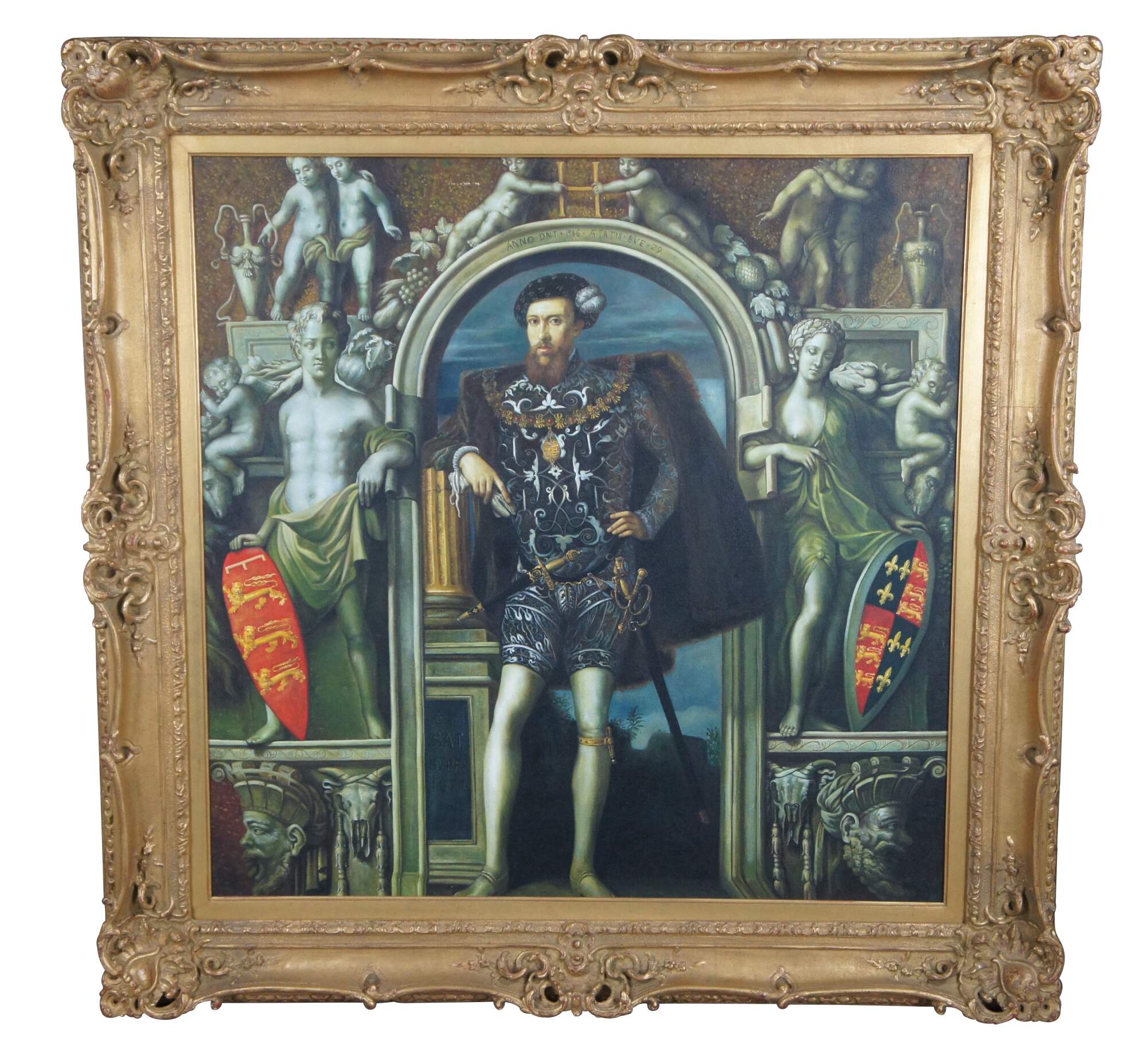
Shipping:
Free Shipping Included
Delivery:
Estimated 2-15 Business Days
Payments:
Credit Card, Check, Cash, PayPal, Apple Pay, Venmo
Returns:
30 Days 100% Money Back Guarantee, Buyer Pays Return Shipping
Description
A reproduction oil painting of Henry Howard the Earl of Surrey at age 29 in 1546. The oginal attributed to Guillim Scrots (1537-1554). Framed in a baroque manner wtih serpentine edging and foliate relief.
Technical analysis and contextual research confirmed that original the portrait dates from the mid-sixteenth century. It is therefore one of the earliest surviving British portraits on canvas.
This painting was first recorded by Loigny in 1637 as part of the collection of Thomas Howard, 14th Earl of Arundel and again in a 1655 inventory of the Arundel Collection. It passed by descent to Arundel’s daughter-in-law, Viscountess Stafford and was bought in 1720 by Sir Robert Walpole at the sale of the Arundel Collection at Stafford House and presented by him to Thomas 8th Duke of Norfolk. On the death of Bernard Marmaduke Fitzalan-Howard, 16th Duke of Norfolk, the painting was accepted by the Gallery in lieu of tax in 1980 but continues to be displayed at Arundel Castle.
Historical context
Surrey was the eldest son of the 3rd Duke of Norfolk, the premier nobleman in England. He enjoyed success as a soldier and a poet at the court of Henry VIII but fell from favour after defeat at St. Étienne in France on 7 January 1546. The sitter is identified in the portrait by the ‘H’ held by putti, and the inscription of his age and the date: ‘ANNO DNI . 1546 . AETATIS . SVE . 29’ within the arch. The motto ‘SAT SUPER EST’ (Enough survives) is inscribed on the pillar.
Surrey was tried for treason early in 1547 on the charge of displaying the royal arms and insignia within his own heraldry at Kenninghall in Norfolk on 7 October 1546. Various contradictory reports describe paintings presented as evidence during the trial but the survival of this work attests to the fact that it was not one of them, as the reports note that the offending images had been ordered to be destroyed. Nonetheless, although the painting contains no treasonous heraldry, it probably informed the rumours that surrounded the trial and by the early seventeenth century it had come to be identified as part of the reason for Surrey’s downfall.
The distinctive shield-shaped Garter jewel worn by the sitter passed to Henry VIII following the earl’s attainder, and subsequently to Edward VI. An identical jewel is depicted in a portrait of Henry Carey, Lord Hunsdon, dated 1591 (Berkeley Castle), and it is possible it had remained in royal possession until being given to Hunsdon, presumably by Elizabeth I.
Condition
Very Good; Gently Used
Dimensions
46" x 4 x 46"; canvas 36" x 36"
You May Also Like